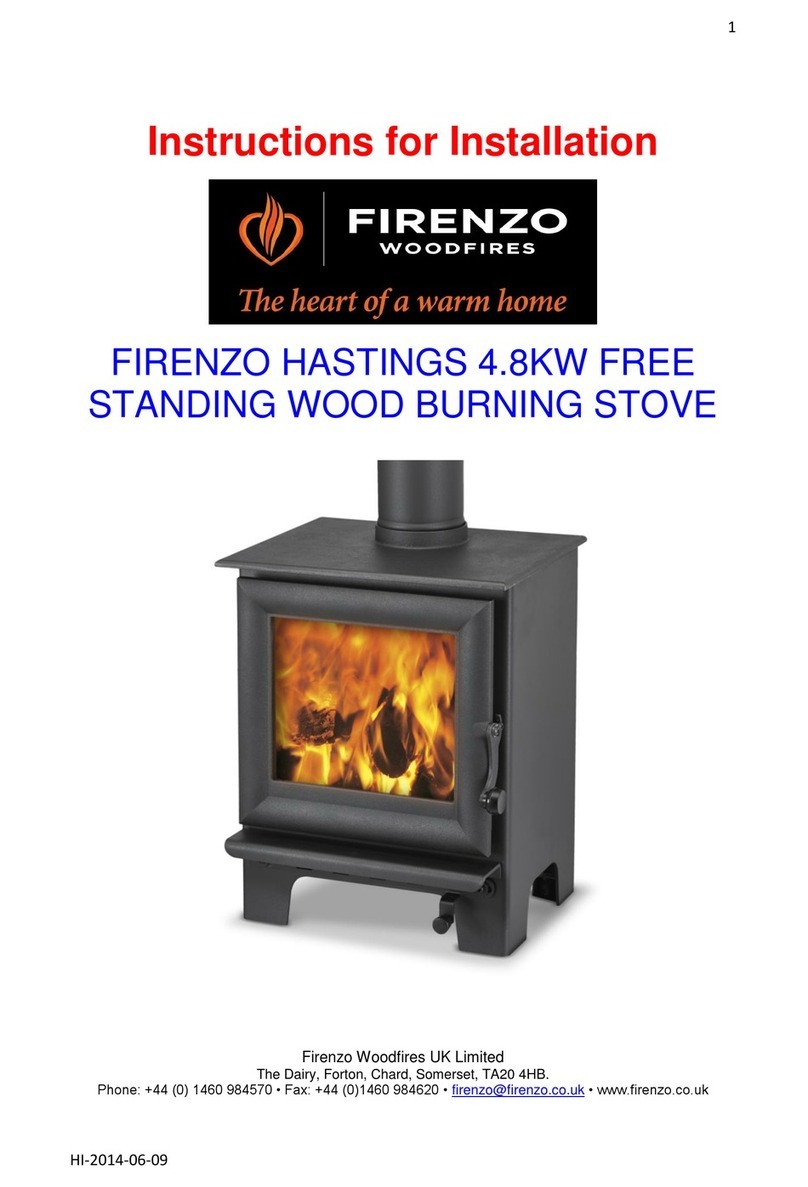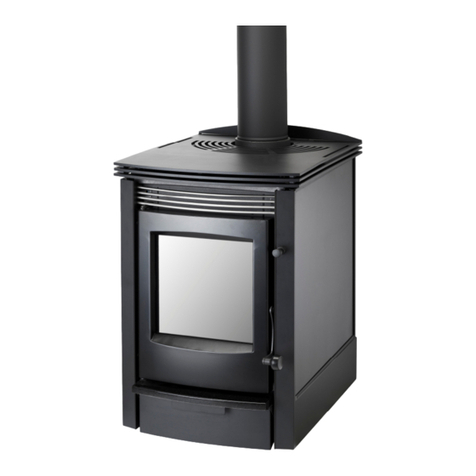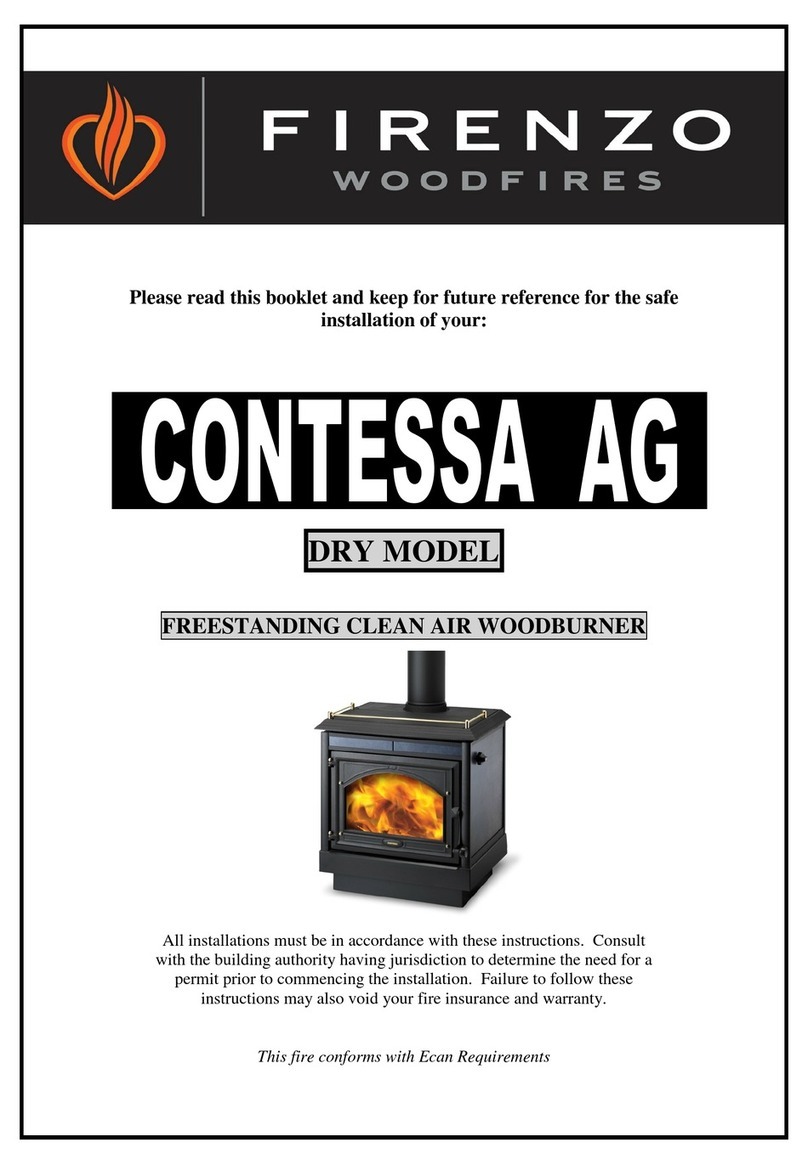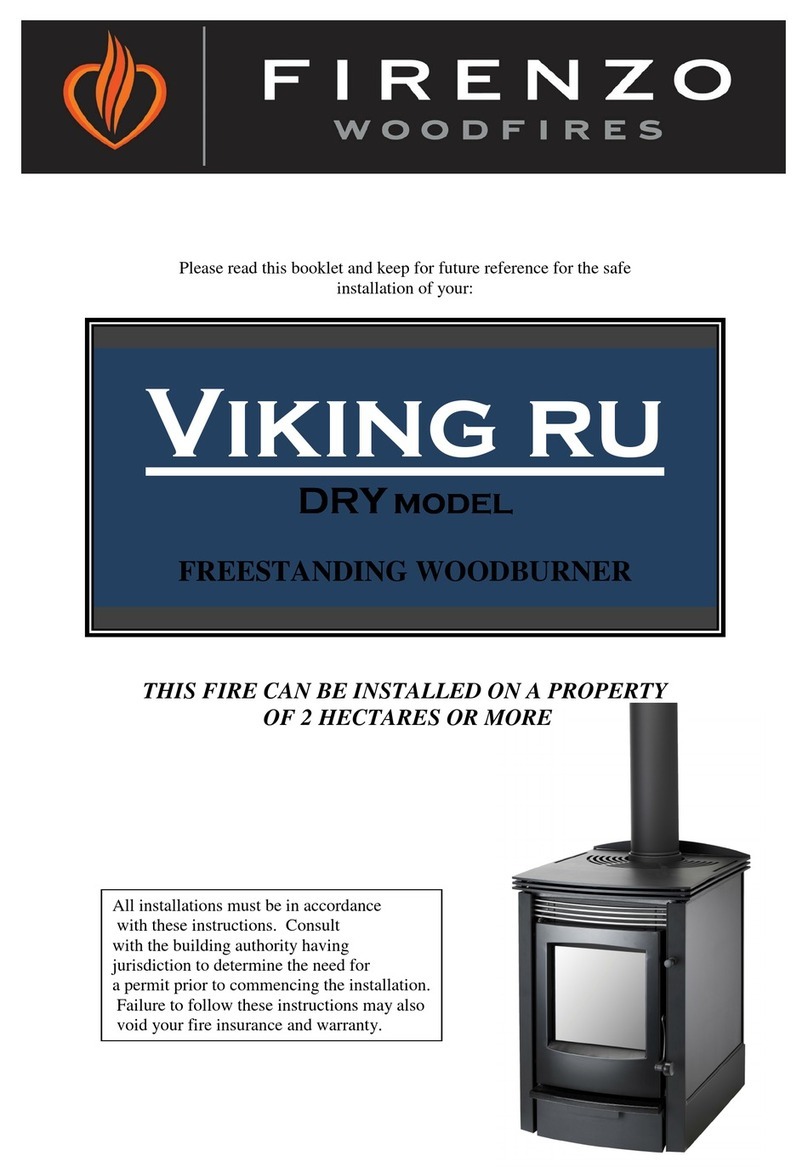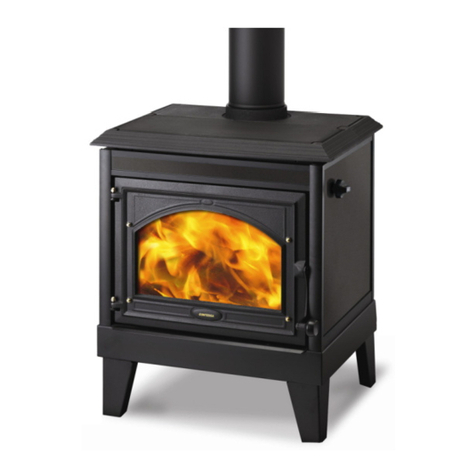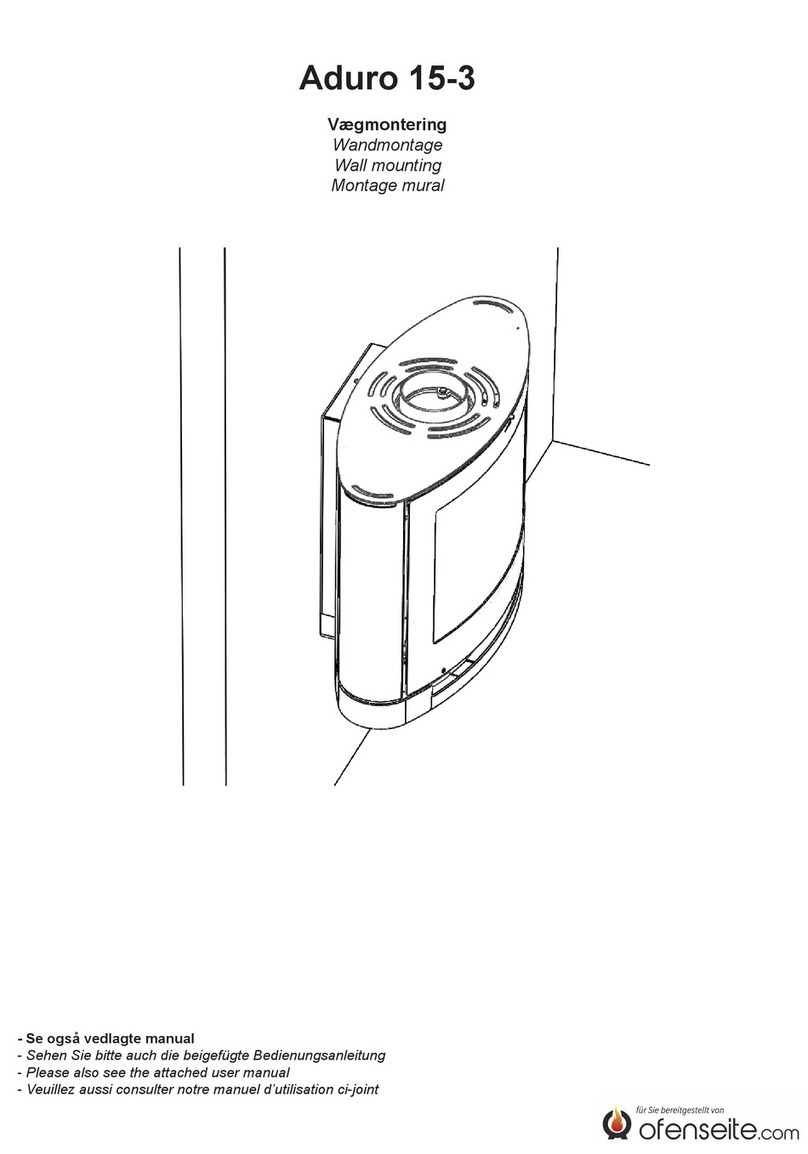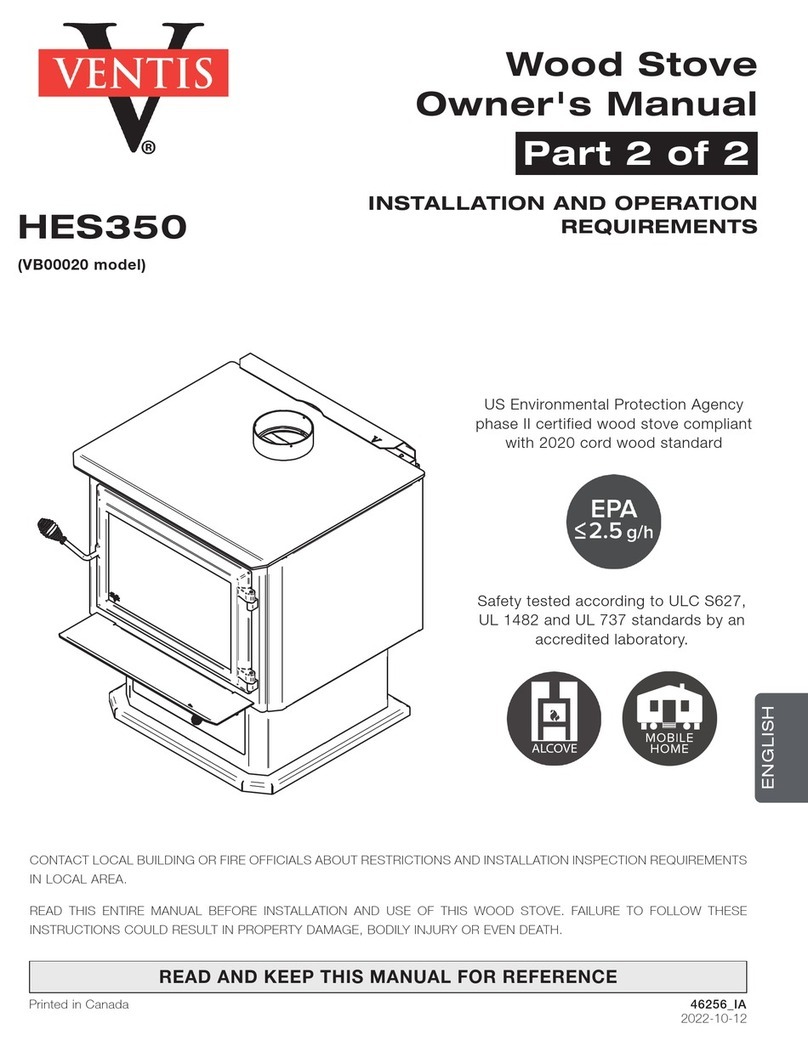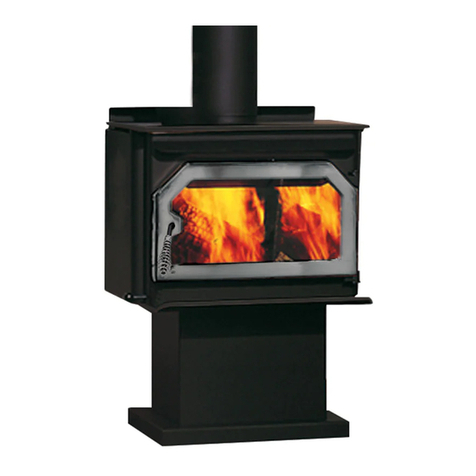4
CU-2013-05-14
The chimney must be accessible for external inspection, and it must be possible to access the cleaning doors and
the chimney if it is to be cleaned from the top (e.g. steel chimneys).
Be aware of the following:
Discuss the cleaning options with your chimney sweep or installer.
If there is insufficient draught in the chimney, it may be a good idea to install the flue pipe straight up so as to
minimise smoke migration in the actual combustion chamber.
Avoid having more bends than necessary, and limit the length of the flue pipe so as not to reduce the draught.
4.1 Fresh air supply
A wood-burning stove requires air for combustion. As a result, firing a wood-burning stove will help create a
healthy climate in your house. The ventilation requirements are described in Sections 2.1 –2.3 and Table 1 of
the Approved Document J.
If it is necessary to install air grilles, they must be positioned so that they cannot be obstructed.
5. Draught conditions
If smoke comes out of the stove when the fire door is opened, it will be due to the poor draught in the chimney.
This type of stove requires at least 12 Pa of chimney draught to achieve satisfactory combustion and to prevent
smoke from escaping. Smoke may, however, escape in any event if the stove door is opened during vigorous
firing, so this should be avoided.
If in doubt, you may want to get your chimney sweep to measure the draught in the chimney.
Draught
The draught in the chimney is the result of the difference between the high temperature in the chimney and the
cooler temperature outside. Other factors that determine whether sufficient negative pressure can be produced to
create a draught include the length and insulation of the chimney, and wind and weather conditions. In the
unusual event of adverse weather conditions that cause downdraught, the appliance must not be used
The draught will be reduced when:
- The temperature difference is too low, e.g. in connection with a poorly insulated chimney. If the
chimney is cold, it may help to light (burn up) a rolled-up newspaper in the chimney‟s cleaning door.
- The outside temperature is too high, e.g. during the summer.
- There is no wind.
- The chimney is not tall enough, with the result that it sits in the lee of the roof surface or tall trees.
These conditions are also associated with the greatest risk of smoke coming back down the chimney.
- Air is entering the chimney in undesired places, e.g. through cracked joints or leaks in the cleaning
door or the flue pipe.
- Unsealed, unused fireplaces are connected to the chimney.
- The flue pipe and chimney are clogged up with soot due to inadequate cleaning.
- The house is too tightly sealed (please see the section on Fresh air supply).
A good draught is achieved when:
- There is a big difference between the temperature in the chimney and outside, i.e. when the need for
heating is greatest.
- The weather is clear and there is a good wind.
- The chimney is of the proper height, i.e. Minimum 4 metres above the stove, and clear of the spine of
the roof.
6. Firing/using the stove
Wood is a material that contains a great deal of gas (approx. 75%). The gases are released when the wood is lit
and heated. For this reason, it is important that these gases are ignited quickly after stoking. If the wood just lies
smouldering, especially after re-stoking, a lot of smoke is created which, in the worst case, may cause an
explosive ignition of the gases, resulting in damage to the stove.
In order to ignite the gases that are released from the wood, and to keep clear, lasting flames during the
combustion process, it is important to let in the required quantity of oxygen (air supply) at all times. The setting of
the air supply, the method of ignition and the lighting intervals depend on the draught in the chimney, the wind
and weather, the amount of heat required, the fuel, etc. This means that it may take some time before you get to
know the correct functioning of the stove under any given circumstances.
Although you can fire your Firenzo stove with almost all kinds of wood, you should not fire with wet wood, or
unseasoned wood. Wood ought to be stored under a roof for at least 1 year, and preferably 2 years, with free
access to wind. Wood should be chopped as soon as possible after felling if it is to dry quickly. The wood can be


